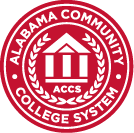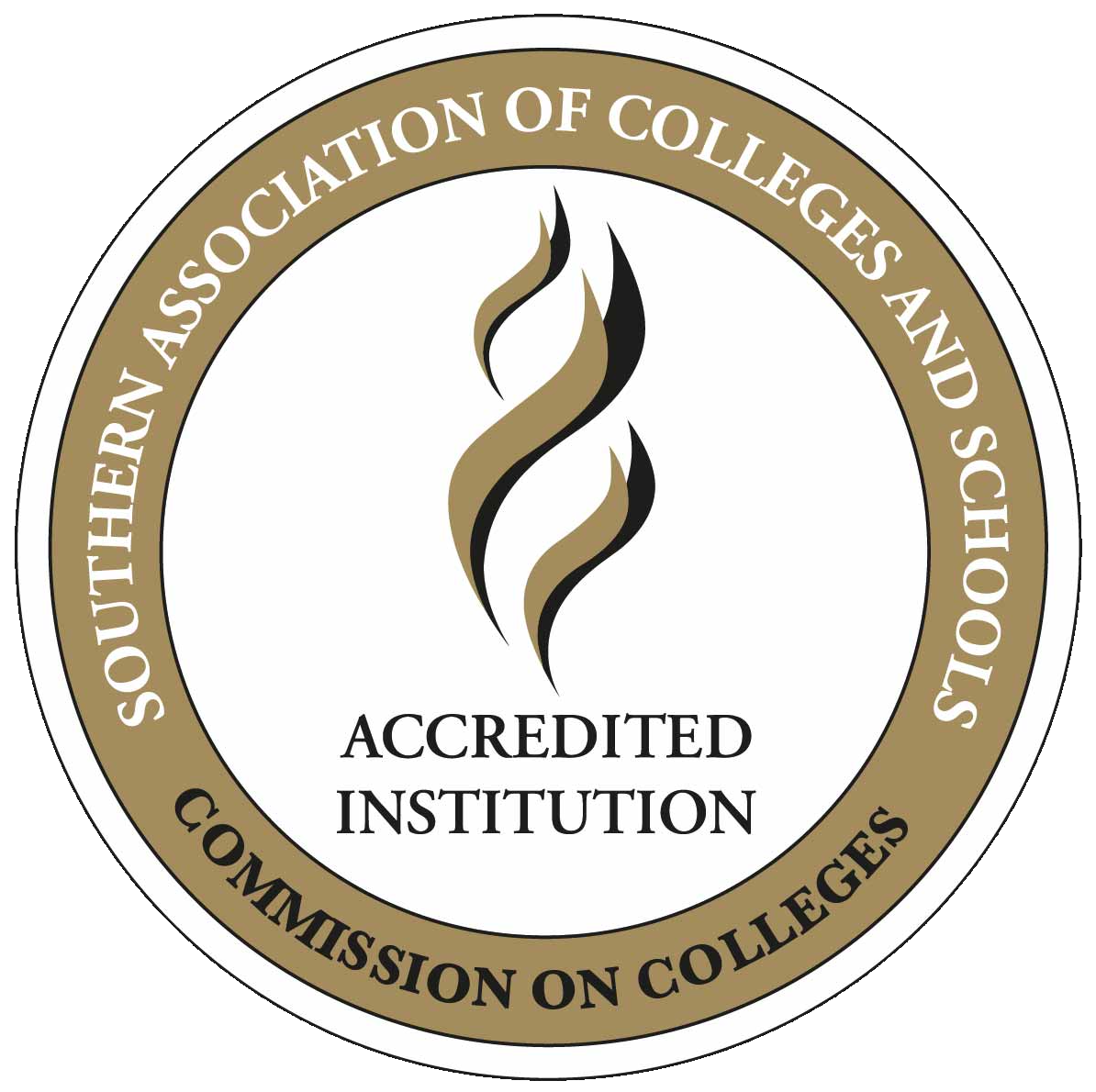Jefferson State Community College uses a number of factors to evaluate student success. These factors are determined based on the student population at the College. The majority of students (38%) are enrolled in Transfer Programs (AA/AS). The second largest group is Career and Technical students (34%). Finally, the College maintains a significant Non-Degree Seeking (NDS) student population (28%) which is comprised mainly of dually enrolled high school students. These factors are updated annually and include:
- Student Performance on Licensure Examinations
- Job Placement Rate for Graduates
- Graduation Rate
- College-going rate of Dual Enrollment Students
- Transfer Student Metrics
Student Performance on Licensure Examinations
The College has a number of accredited programs that have national licensure examinations. Licensure examinations provide a national standard and benchmark for many of our programs. For programs that require a national exam, the college has a long history of meeting and/or exceeding national benchmarks with few exceptions. It is the expectation of the College that each CTE program with a licensure exam will meet or exceed the standard set forth by their corresponding accrediting body. The results for 2020 -2021 are:
| Program | Licensure/Certification Pass Rate | Area Goal |
| Registered Nursing | 2021 – 84.1% | At or above National Mean = 86.57% |
| Physical Therapist Assistant | 2021 – 75% | 85% average over 2 years |
| Medical Laboratory Technology | 2021 – 75% | 75% average over 3 years |
| Radiology Technology | 2021- 90% | 75% average over 5 years |
| Funeral Service Education | 2020 – 83% Arts, 55% Sciences | 60% average over 3 years |
| Veterinary Technology | 2021 – 76% | 50% average over 3 years |
| Emergency Medical Services | 2021 – 81% | 70% annually |
| Respiratory Therapy | 2021 – 41% | 60% average over 3 years |
| Culinary & Hospitality | 2021 – 77% | 75% annually |
The College was pleased that every area met and/or exceeded its licensure pass rate according to their accrediting body. Respiratory Therapy had a low pass rate in 2020-2021. The data displayed was the rate for that individual year, their benchmark is a three-year average, which they still exceeded. The Respiratory Therapy Program Director is aware of the low licensure pass rate and assembled an action plan for the Commission on Accreditation for Respiratory Care (COARC).
Job Placement Rate for Graduates
Job placement is a paramount outcome, especially for our students. Each year the Office of Institutional Effectiveness coordinates with individual areas to ascertain job placement and student perception of preparedness. It is the expectation of the College that the CTE programs as a whole will have a 90% employment rate within one year of graduation which aligns with the majority of the standards set forth by the corresponding accrediting bodies concerning employment rates. Individual and aggregated data are displayed below.
| Registered Nursing – 100% | Physical Therapy Assistant – 100% | Medical Laboratory Technician – 91% | Radiology Technician – 100% |
| Funeral Service – 100% | Veterinary Technology – 100% | Emergency Medical Services – 100% | Child Development – 100% |
| Construction – 100% | OAD/Business – 76% | Culinary – 71% | Manufacturing –100 % |
| Law Enforcement – 60% | Respiratory Therapy – 59% |
The overall placement rate for the College’s AAS programs was 91%.
Culinary: The restaurant industry experienced poor business conditions during the pandemic including mandated closings, a cratered economy, and capacity limits in the food industry. The food sector lost about $240 billion in sales. Eight million employees went jobless or were furloughed during the peak of the lockdown, which impacted the College’s graduates’ ability to gain employment. However, the restaurant industry is expected to grow and continue to recover as COVID restrictions retract and the economy rebounds.
RPT: The employment rate for the College’s respiratory therapy graduates declined. The program experienced a decline in the return of surveys by graduates between 2019-2021. The survey allows the College to confirm the employment status of the graduate. Upon investigation, it was discovered that the survey goes to their JSCC e-mail which students no longer use after graduation. Program faculty are now using personal emails and phone calls to obtain this data. Also, the program was unable to place graduates in employment due to the decline in licensure passage rates. The program faculty are working with graduates from 2021 and 2022 to increase the licensure passage rate which will increase the job placement rate. The program developed an action plan to address the low licensure pass rate for current students.
Graduation Rate
Jefferson State Community College selected the National Student Clearinghouse graduation rate because the transfer student population is approximately half of our student body. The benchmark for success on this metric is to be at or above the National Student Clearinghouse completion rate for two-year public colleges in Alabama. This benchmark is published each year by the research center of the National Student Clearinghouse.
| Graduates | Total Cohort | Graduation Rate | Average for Alabama 2-yr |
| 559 | 1648 | 34% | 38.6% |
The College recognizes that it is not meeting the established benchmark for success. Looking at the disaggregated data over three years reveals the following at-risk populations: African Americans (particularly males), Pell-awarded students (particularly males), and Hispanic students. In an effort to bolster these populations, the College has taken the following long-term actions. A mentoring group was formed for African American males called Men 2 Men. Its mission is to foster success among African American male students by providing mentorship by African American male faculty and staff. The College hired a Hispanic Community Initiative Coordinator to aid with the increasing Hispanic enrollment. In the Fall of 2022, the College launched a Student Success Center to address the non-academic needs of all students. Research shows that Pell awarded students are likely to be socio-economically disadvantaged and prone to need more support in the areas of transportation, food insecurity, and childcare. The purpose of the Student Success Center is to aid students in addressing these non-academic issues.
Transfer Student Metrics
Approximately 38 percent of the College’s students declare themselves to be transfer students; therefore, measuring the success of these students is very important. There are multiple methods the College uses including feedback from area Universities, the ability to produce “transfer-ready” students, and National rankings of transfer students.
Feedback From Area Universities
Jefferson State transfer students must maintain a GPA of 2.50 or greater after transferring to a 4-yr university. This GPA is the minimum GPA needed to transfer from a 2-yr to a 4-yr institution in the state of Alabama.
| Institution | Period Covered | Average GPA for JSCC Students | Average GPA for all Alabama Two-Year College Students |
| University of Alabama | Summer 2020-Spring 2021 | 3.01 | 3.09 |
| University of Alabama in Birmingham | Summer 2020-Spring 2021 | 3.07 | 3.08 |
| University of Alabama in Huntsville | Summer 2020-Spring 2021 | 3.42 | 3.14 |
| Auburn University | Summer 2020-Spring 2021 | 3.20 | 3.01 |
| Jacksonville University | Summer 2020-Spring 2021 | 2.73 | 2.89 |
Production of “Transfer Ready” Students:
Because transfer students represent such a large part of the College’s student body, fulfilling its mission to prepare students for an academic career at a four-year university is important to the College. Tracking students and their successes after they leave college is difficult. Because of this, the College looks at its ability to produce a “transfer-ready” student prior to leaving the college. The definition of a “transfer-ready” student is one who is enrolled in the AA or AS program with 24 or more college-level credit hours earned and holds a GPA of at least 2.50. 40% of transfer students must be designated as “transfer ready” (24 college-level credit hours and earned a 2.50 GPA or higher). These benchmarks allow students to transfer to most public Alabama four-year universities.
| Academic Year | Total AA/AS Students | Total Transfer Ready | Transfer Ready Rate |
| 20-21 | 4512 | 2039 | 45% |
College-going Rate of Dual Enrollment Students
The College is fortunate to have access to a public database formed by the Public Affairs Research Council of Alabama (PARCA). Each year they conduct a “college-going” study of Alabama HS graduates that can be disaggregated by school and system. Dual Enrollment programs have been shown to bolster college attendance after HS graduation.
| Jefferson State DE Students 20-21 | All HS Graduates in JSCC Service Area |
| 88% | 61% |
Jefferson State has exceeded our goal of an 85% college-going rate, especially when compared to the non-dual enrollment HS graduates of our service area.



